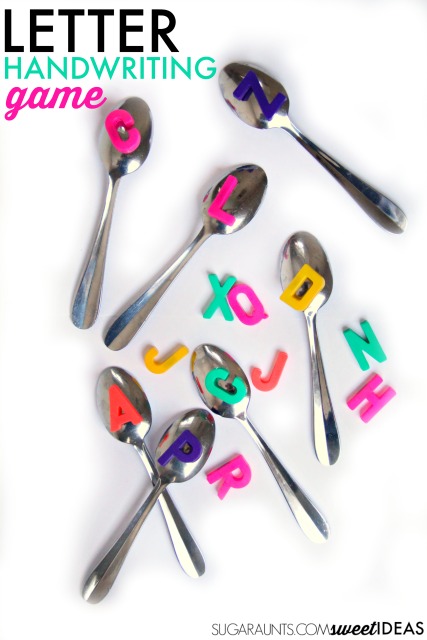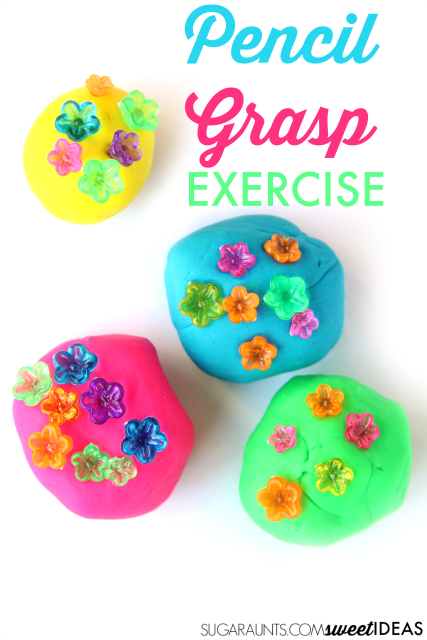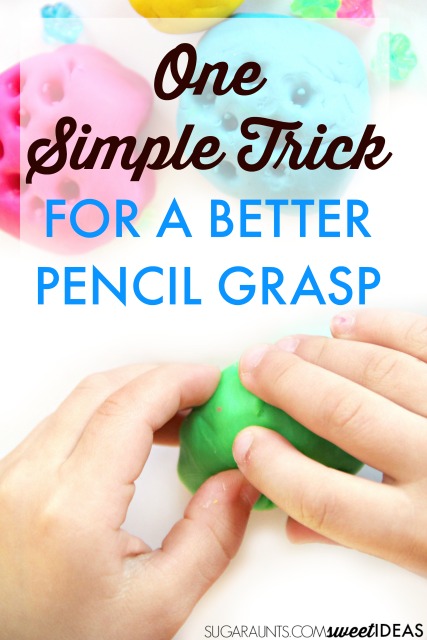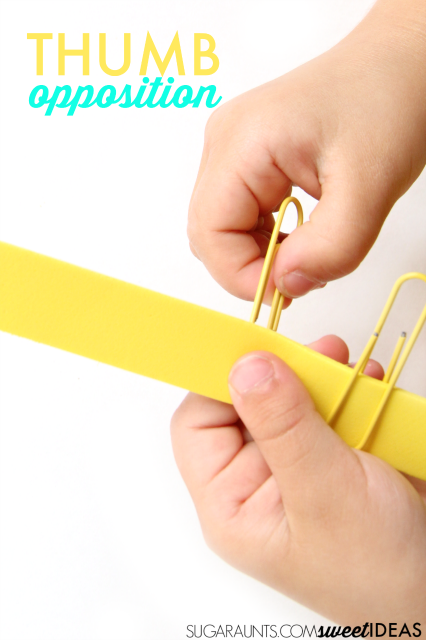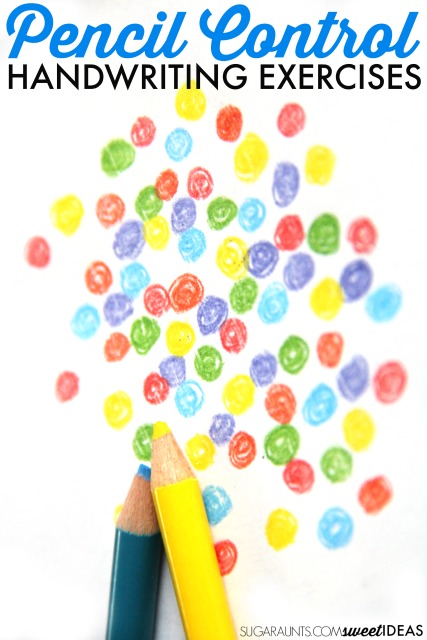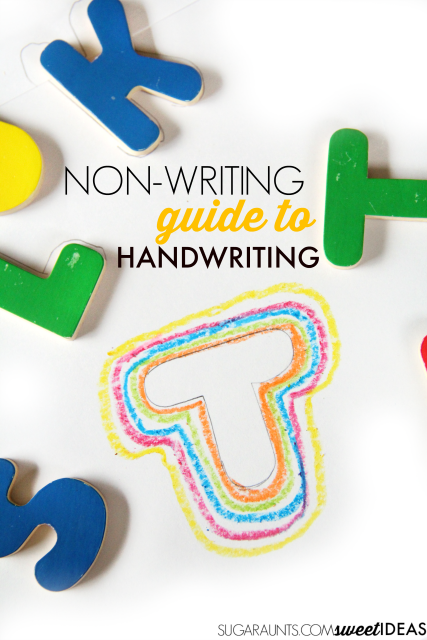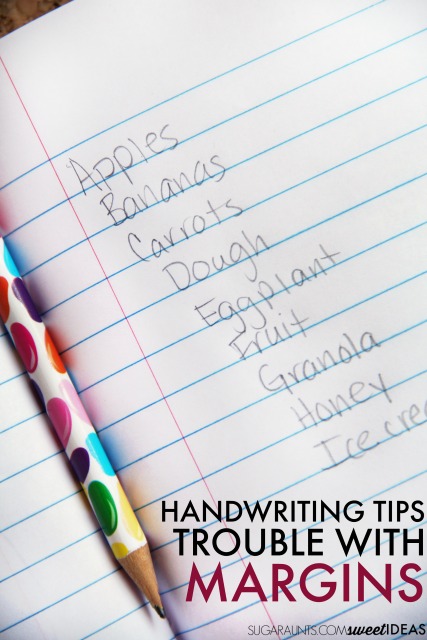Pencil grasp…it’s a quandary for many children! When it comes to cursive handwriting, pencil grasp can be an antagonist that interferes with legibility, rhythm, flow, speed, and formation of cursive letters. Read on for more information on promoting a functional grasp for use in cursive writing.
When we write with a pencil in cursive it’s really no different than holding a pencil for printed handwriting work. It is important to note that cursive writing requires fluid motion.
This cursive handwriting post is part of our 31 day series on cursive handwriting.
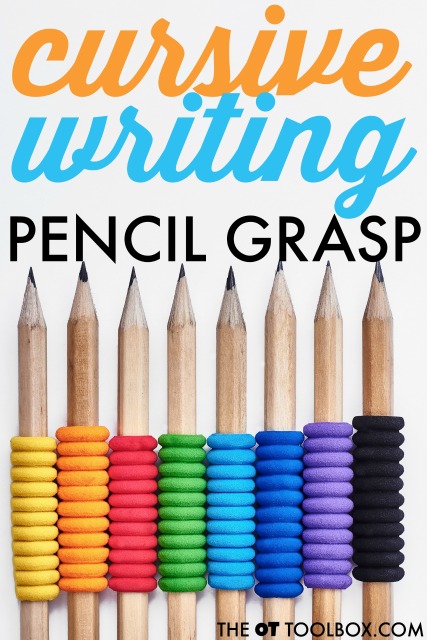
Cursive Writing Pencil Grasp
The fluid motion of a pencil is very important for letter formations and for connectors between letters. If the pencil is being held too rigidly, then the writing will be slow and inefficient. Pencil strokes may present as jagged or with difficulty retracing over lines.
This can result and limit legibility.
When the pencil is moved in written work, movements should come from the distal joints of the hand rather than at the wrist, elbow, or shoulder.
The pencil is controlled by the MCP joint PIP joint and DIP joints of the fingers and the CMC joint MCP joint and IP joint of the thumb.
Read more about the joints of the thumb and their involvement in creating an open thumb web space for an efficient and functional pencil grasp.
When these joints are the primary movers and stabilizers in holding and writing with a pencil, it is possible to manipulate the pencil in all motions needed to form and connect cursive letters.
One of the best tools for addressing pencil grasp needs is to strengthen, strengthen, strengthen! Use these fine motor activities to improve pencil grasp to make it fun.
Extended Wrist in Pencil Grasp
When writing with the distal joints of the fingers and thumb, the pencil is able to move fluidly with just an extra slightly extended rest. An extended wrist puts the hand into a more functional tendon placement for movement.
Pencil grasp in cursive writing
Now to determine if the fingers are moving correctly with a functional pencil grasp, try this exercise.
Hold a pencil in your fingers and rest your wrist on the paper. Use the pencil to make small curves and circles with only using the fingers and thumb. Pencil strokes should be fluid and controlled. The motions should occur within the hand.
Here is an activity to develop and strengthen distal finger control needed for handwriting.
Thumb wrap grasp and cursive writing
A common pencil grasp is a thumb wrap grasp. This is a way to hold the pencil presenting with the thumb wrapped around the pencil. In the thumb wrap grasp, the thumb is stabilizing the pencil.
This grasp occurs with a closed some webspace and decreased motion using the fingertips and thumb.
This pencil grasp can be inefficient for cursive handwriting because of cramped muscles and limited motion of the pencil. In these cases, it’s not a functional grasp pattern. However, for many children, this grasp can be functional in that individuals are able to write legible cursive writing.
There is research indicating that kinetic differences resulting from thumb position seemed to have no bearing on speed and legibility.
Flexed wrist in cursive writing
If a student is observed with a flexed wrist in either printed or cursive writing an observer may note that handwriting is not as functional or legible as it may be.
This is because the intrinsic muscles of the hand are in an inefficient pattern resulting in less range of motion when writing and moving a pencil.
Additionally, increased stress can also result in carpal tunnel compression when used over and over again by those who write a lot.
Use a DIY slanted surface to promote an extended wrist in handwriting.
Pencil grasp issues and cursive writing
Most kids learn cursive writing beginning in second grade. At this stage, it is often quite difficult to change a pencil grasp. Grasps are very ingrained at second grade but can be accommodated with a pencil grasp. After grade four, it is very difficult to change a grasp pattern.
Key takeaways on pencil grasp and cursive handwriting:
Focus on a functional grasp!
Use fine motor activities to address pencil grasp needs.
References
Heidi Schwellnus, Heather Carnahan, Azadeh Kushki, Helene Polatajko, Cheryl Missiuna, Tom Chau; Writing Forces Associated With Four Pencil Grasp Patterns in Grade 4 Children. Am J Occup Ther 2013;67(2):218-227. doi: 10.5014/ajot.2013.005538.
Read more about pencil grasp and grasp patterns:
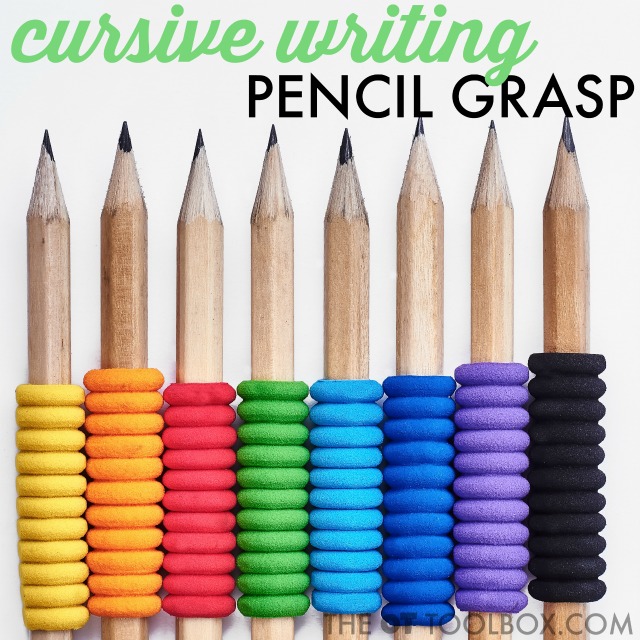
New Feature...DOWNLOAD THIS POST AS A PDF! CLICK HERE


